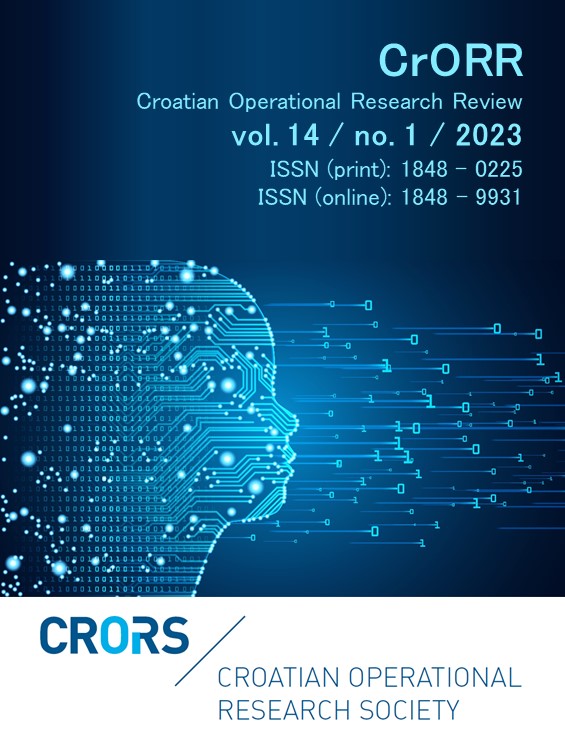A novel modified Khatter’s approach for solving Neutrosophic Data Envelopment Analysis
Abstract
The evaluation of the performance of decision-making units (DMUs) that use comparable inputs to produce related outputs can be accomplished through a non-parametric linear programming (LP) technique called Data Envelopment Analysis (DEA). However, the observed data are occasionally imprecise, ambiguous, inadequate, and inconsistent which may result in incorrect decision-making when these criteria are ignored. Neutrosophic Set (NS) is an extension of fuzzy sets which is used to represent unclear, erroneous, missing, and wrong information. This paper proposes a neutrosophic version of the DEA model, and a novel solution technique for Neutrosophic DEA (Neu-DEA) model. The possibility mean for triangular neutrosophic number (TNN) is redefined and modified the Khatter’s approach to convert directly the Neu-DEA model into its crisp DEA model. As a result, the Neu-DEA model is simplified to a crisp LP problem with a risk parameter (δ ∈ [0, 1]) that represents the attitude of the decision-maker towards taking risk. The efficiency score of the DMUs is computed by using various risk factors and divided into efficient and inefficient groups. The ranking of DMUs is determined by calculating the mean efficiency score of DMUs, which is based on various risk parameters. A numerical example is illustrated here to describe the suggested approach’s flexibility and authenticity and compared with some of the existing approaches.
Downloads
Published
Issue
Section
License
- Authors retain copyright and grant the journal right of first publication with the work simultaneously licensed under a Creative Commons Attribution License that allows others to share the work with an acknowledgement of the work's authorship and initial publication in this journal
- Authors are able to enter into separate, additional contractual arrangements for the non-exclusive distribution of the journal's published version of the work (e.g., post it to an institutional repository or publish it in a book), with an acknowledgement of its initial publication in this journal.
- Authors are permitted and encouraged to post their work online (e.g., in institutional repositories or on their website) prior to and during the submission process, as it can lead to productive exchanges, as well as earlier and greater citation of published work (See The Effect of Open Access).


